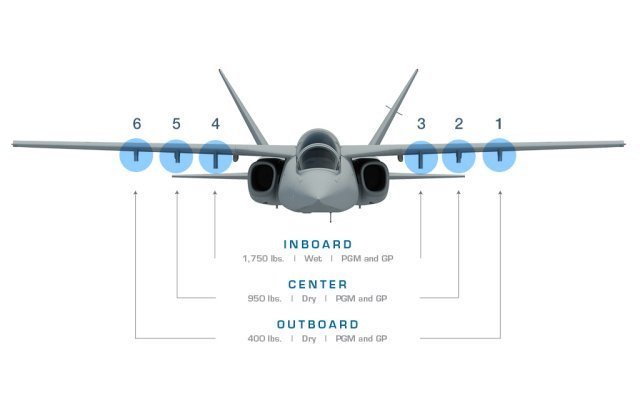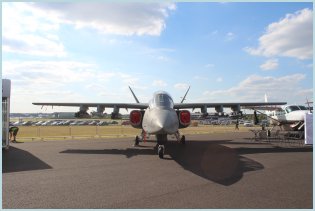Textron AirLand Scorpion
| a | ||||||||||||||||||||||
|
Textron AirLand Scorpion light attack and reconnaissance aircraft
|
||||||||||||||||||||||
|
|
||||||||||||||||||||||
 |
||||||||||||||||||||||
|
|
||||||||||||||||||||||
|
The Textron AirLand Scorpion is a light attack and intelligence, surveillance and reconnaissance (ISR) jet aircraft currently under development. The aircraft is being developed by the American company Textron AirLand, LLC, a joint venture between Textron and AirLand Enterprises, LLC. The Scorpion is capable of performing air defence, irregular warfare, border patrol, maritime security, disaster relief and counter-drug missions.
The development of the Scorpion aircraft was commenced in January 2012, with the objective of producing the most economical jet-powered light attack aircraft in the world. The first prototype was secretly constructed by Cessna at their Wichita, Kansas facility between April 2012 and September 2013 and first flown on 12 December 2013. The Scorpion made international debut last year at the Royal International Air Tattoo in July. It also participated in a US Northern Command and Kansas National Guard training exercise called Vigilant Guard 2014. The aircraft accumulated 225 hours of flight by October 2014 and is expected to enter production phase in 2015. |
||||||||||||||||||||||
| Main Variants | ||||||||||||||||||||||
|
-
|
||||||||||||||||||||||
| Technical Data | ||||||||||||||||||||||
| Design | ||||||||||||||||||||||
|
The Scorpion demonstrator jet aircraft is fitted with an all-composite fuselage and is designed for light attack and intelligence, surveillance, and reconnaissance missions. The Scorpion is powered by twin turbofan engines with a tandem cockpit, retractable sensor mounts, internal payload bay, and external stores carriage for precision and non-precision munitions. Its modular architecture allows unencumbered future integration of multiple sensors and weapons, minimizing non-recurring expenses.
The Scorpion features a straight, high-mounted wings allowing for easy clearance underwing stores. The wings are fitted just aft of the cockpit at midships and atop the fuselage spine. The engines are situated in a spaced, side-by-side arrangement at the center-rear of the airframe with each engine aspirated by rectangular intakes located aft of the cockpit. The engines exhaust through traditional exhaust rings at the base of each vertical fin. The empennage is made up of a pair of outward-canted vertical tail fins and a pair of horizontal tailplanes. The undercarriage is wholly retractable and of a conventional tricycle arrangement. Production costs have been kept to a minimum by using components developed for Cessna business jet platforms, common technology and manufacturing resources. The flap drive mechanism is from the Cessna Citation XLS and Cessna Citation Mustang, while the aileron drive mechanism is from the Citation X. Textron Airland refers to the Scorpion as an ISR/strike aircraft rather than a light strike plane. It is meant to handle "non-traditional ISR" flights that U.S. fighters had done in Iraq and Afghanistan. The Scorpion has a length of 13.25m, wing span of 14.42m and height of 4.26m. The standard weight of the aircraft is 5,352kg. The internal payload bay can accommodate a weight of 1,360kg, while the aircraft can carry a maximum payload of 4,286kg. |
||||||||||||||||||||||
|
Propulsion
|
||||||||||||||||||||||
|
The Textron AirLand Scoprion is powered by two Honeywell TFE731 turbofans producing 8,000 lb (3,600 kg) of thrust. The two engines are controlled by a digital electronic engine control system. The electrical and hydraulic systems are powered by the accessories mounted above the engine gearbox. The fuel load capacity of the aircraft is 2,721kg. The engines can operate on Jet-A, JP-5, and JP-8 jet fuels. The Scorpion has a maximum speed of about 833 km/h ( 0.78 Mach).
|
||||||||||||||||||||||
|
Avionics
|
||||||||||||||||||||||
|
The Scorpion aircraft accommodates two pilots in tandem layout. The two cockpits are equipped with advanced multifunction colour displays, providing the details of flight characteristics, aircraft operation, navigation and armament data. The avionics suite integrates inherent Flight Management System (FMS), Hands on Throttle and Stick (HOTAS) controls, Class-B Terrain Awareness and Warning System (TAWS), engine indication and crew alerting system (EICAS), dual Air Data, Attitude and Heading Reference Systems (ADAHRS), dual GPS/Satellite Based Augmentation Systems (SBAS) and integrated moving maps. Its night-vision compatible cockpit offers instrumentation for weather radar control, display of external video and digital flight data recording.
|
||||||||||||||||||||||
| Armament and accessories | ||||||||||||||||||||||
|
Scorpion’s internal payload bay provides critical operational flexibility to quickly incorporate new payloads, scaling tactical systems performance to meet operational capability needs. With its modular partitioning, loading, alignment and retention system, the payload bay can accommodate a variety of sensors, fuel, and communications modules in the most appropriate capability mix to meet a diverse range of mission performance profiles. Scorpion’s six external hard points can carry up to a total of 6200 pounds of ordnance in a variety of configurations to meet mission needs. The inboard stations (3 & 4) are also plumbed for additional external fuel tanks to extend operational reach. Mil Std 1760 connections and NATO standard 14 inch lug ejector racks can interface with a wide range of international weapons. Last year, Textron AirLand showcased during RIAT and Farnborough airshows a Scorpion equiped with Raytheon’s Griffin Missile and Enhanced Paveway 4; Boeing’s JDAM and SDB; and the Lockheed DAGR.
 |
||||||||||||||||||||||
| Specifications | ||||||||||||||||||||||
|
||||||||||||||||||||||
 |
||||||||||||||||||||||
|
||||||||||||||||||||||































